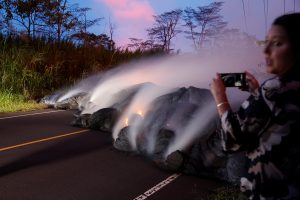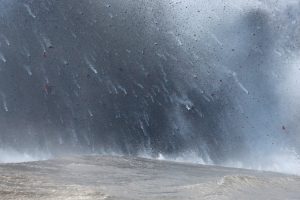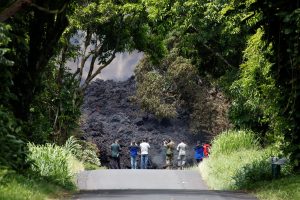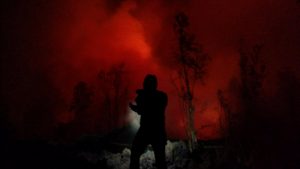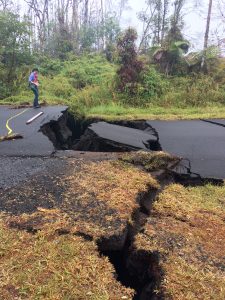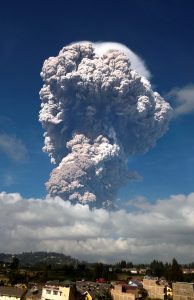
By Jolyn Rosa
HONOLULU (Reuters) – Fast-moving lava from Hawaii’s Kilauea volcano forced officials to close part of a highway on Tuesday, and they warned that sharp, thin strands of volcanic glass fibers carried by the wind could injure eyes and lungs.
As lava crossed Highway 132, officials shut a stretch of road from Lava Tree State Park to Four Corners and told residents who had not evacuated to leave the area immediately.
The lava flow destroyed a farm where Kevin Hopkins and partners raise tropical fish and the ornamental carp known as koi. “It just came over and ate the farm, boiled the water out of the ponds,” Hopkins said.
Earlier on Tuesday, a small explosion of ash erupted from the summit of the volcano in a vertical plume some 15,000 feet (4,600 meters) high, the U.S. Geological Survey said, the latest outburst in a month of volcanic activity.
The agency warned that ash was drifting northwest and liable to affect anyone in the summit area. Hundreds of people have been ordered to leave the vicinity of one of the world’s most active volcanoes in its biggest eruption cycle in a century.
Kilauea entered its fourth week of what may be an unprecedented, simultaneous eruption at its summit crater and along a six-mile (9.7-km) string of fissures 25 miles (40 km) down its east flank.
Lava flows from multiple fissures have blocked roads and damaged dozens of buildings on Hawaii’s Big Island.
Lava has also destroyed more than 400 electric poles and other equipment, causing power outages, the utility Hawaii Electric Light reported. It is unclear how many homes and businesses were without power.
One fountain of lava rose more than 200 feet (60 meters) at times on Monday, the Geological Survey said.
Officials are on high alert for occasional earthquakes, though most have been small.
Lava has engulfed the heads of two wells that tap into steam and gas deep into the Earth at the 38-megawatt Puna Geothermal Venture electrical plant, which used to produce a quarter of the Big Island’s electricity. Its operator, Israeli-controlled Ormat Technologies Inc, said it had not been able to assess the damage.
So far no deaths have been blamed on the eruption, though a man’s leg was shattered when he was hit by a plate-size chunk of lava rock.
Residents fear the electrical plant’s deep geothermal wells may be explosive. Officials have said the power plant is safe but lava has never engulfed a geothermal plant anywhere in the world, creating a measure of uncertainty.
Contingency plans have been made for a possible helicopter evacuation of up to 1,000 residents in a coastal area south of the fissures should their last exit route, State Highway 130, become blocked by lava or become unsafe due to gaping cracks, County of Hawaii officials said.
At least 82 homes have been destroyed in the southeastern corner of Big Island and about 2,000 people have been ordered evacuated since Kilauea began erupting on May 3.
(Reporting by Jolyn Rosa and Marco Garcia; Writing and additional reporting by Jonathan Allen and Sharon Bernstein; Editing by Sandra Maler and Darren Schuettler)


